Ecuador is a top destination for divers, offering unforgettable experiences at two standout locations: the Galápagos Islands and Isla de la Plata. In this guide, I’ll share my personal experiences diving in these incredible spots, along with practical tips and insider insights to help you plan your own Ecuador diving adventure.
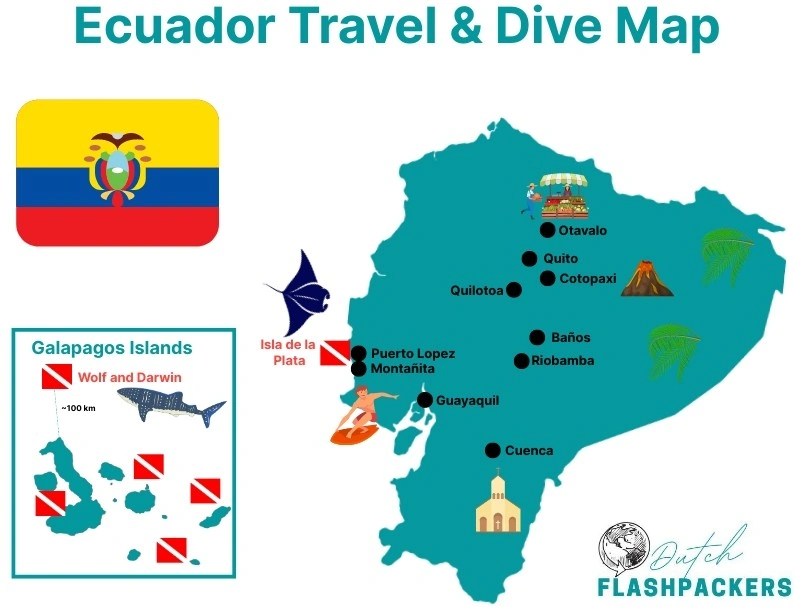
The Galápagos Islands: A Diver’s Paradise
The Galápagos Islands are world-famous for their wildlife, both above and below the water. Diving here is like stepping into a nature documentary, with encounters that will leave you in awe. Diving in the Galápagos is a mix of local dives and liveaboard adventures. To experience the best sites, such as Wolf and Darwin, a liveaboard is essential. Local sites like Cousins Rock, Gordon Rocks, and Kicker Rock offer a good chance to see schooling hammerhead sharks, Galápagos sharks, and playful sea lions. You will find more about our diving experience in the iconic Galápagos islands in our extensive Galápagos personal experience guide!
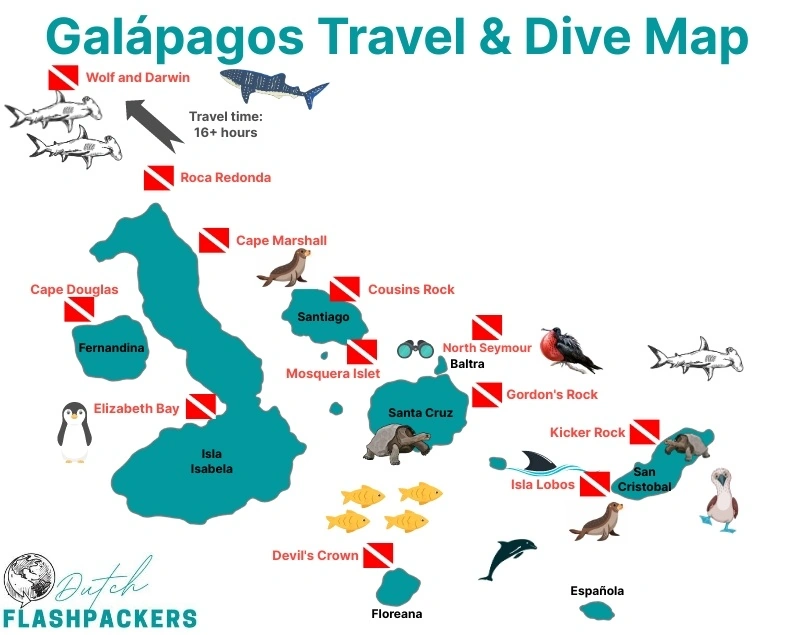
World-Famous Dive Sites: Wolf and Darwin
For many divers, Wolf and Darwin are the crown jewels of the Galápagos. These remote islands, only accessible by liveaboard, offer some of the most thrilling dives in the world. Strong currents and deep walls attract huge schools of scalloped hammerheads, whale sharks during the June–November season, and plenty of other pelagics. Encounters with playful sea lions, dolphins, and even orcas are possible. Conditions can be challenging, so these sites are recommended for advanced divers.
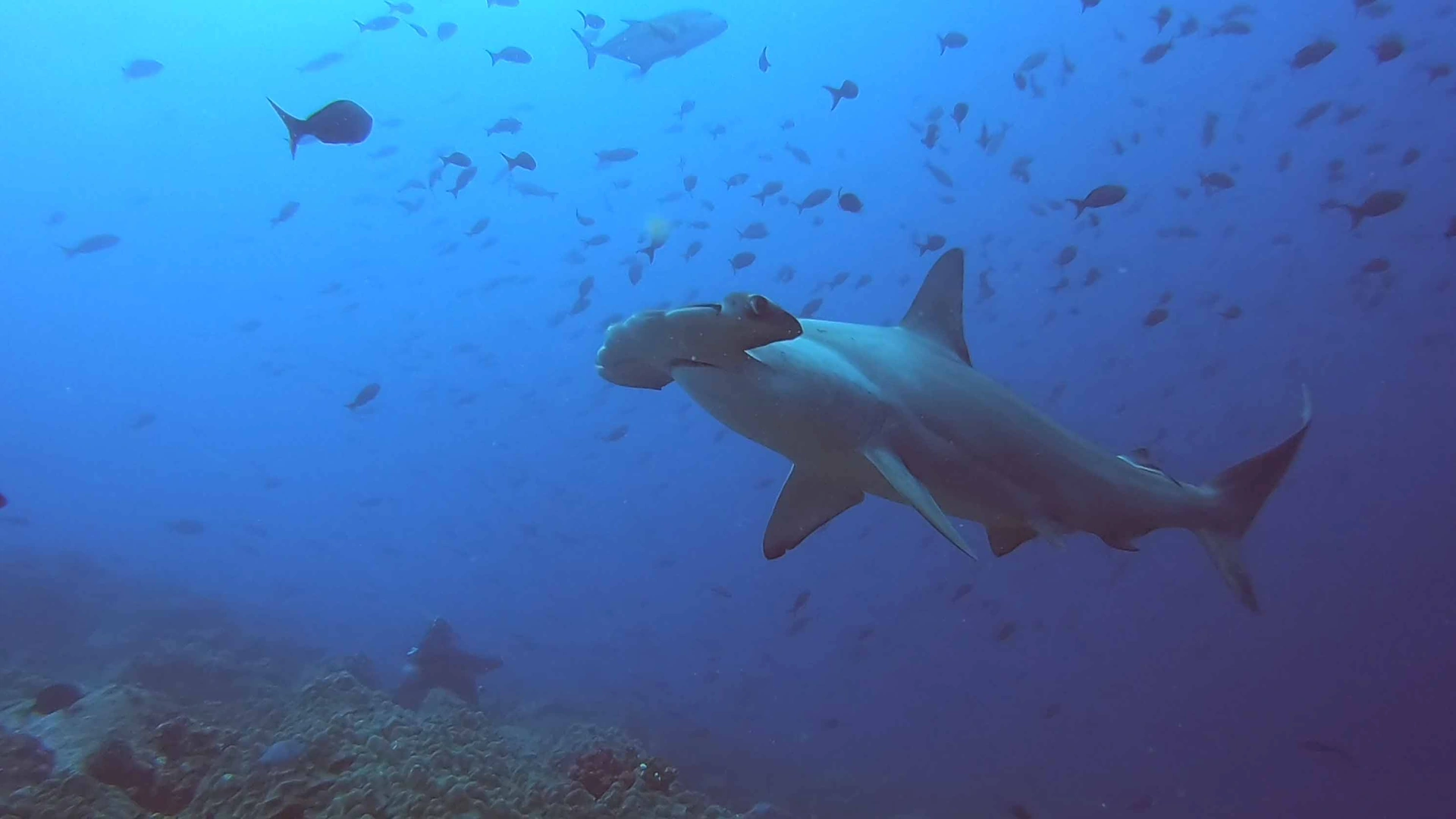
Galapagos’ Local Dive Sites
If a liveaboard isn’t part of your plans, you can still enjoy world-class diving with day trips from the inhabited islands. Each of the three main hubs offers unique sites and experiences.
Isabela Island: Less visited for diving, but still worthwhile. Sites around Los Túneles and Cape Marshall offer sightings of manta rays, giant schools of barracudas, and occasionally hammerheads. Diving here feels wilder and more remote than the central islands.
Santa Cruz (Puerto Ayora): The most popular base for travelers. Day trips take you to Gordon Rocks (famous for hammerheads), North Seymour (great for rays, turtles, and reef sharks), and Cousins Rock (frogfish, seahorses, and big pelagics).
San Cristóbal: A quieter hub, but just as rewarding. Kicker Rock (León Dormido) is one of the Galápagos’ most iconic dives, with vertical walls and channels full of sharks, rays, and sea lions. You’ll also find Isla Lobos, where playful sea lions accompany divers.
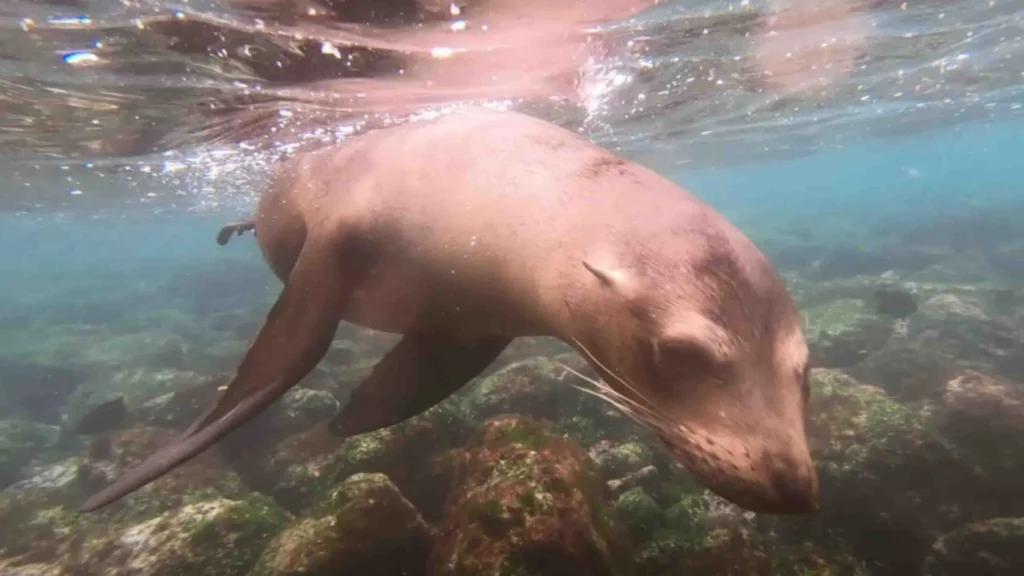
Isla de la Plata: The Poor Man’s Galápagos
Often called the “Poor Man’s Galápagos,” Isla de la Plata is a hidden gem for divers off the coast of Ecuador, near Puerto Lopez. Local dive sites, including Isla de la Plata itself and nearby Salango Island, feature vibrant coral reefs, rocky outcrops, and abundant marine life. Schools of tropical fish, playful sea lions, curious sea turtles, and occasionally reef sharks make each dive memorable. These dives are more accessible than the Galápagos Islands, with gentler currents and shallower depths, making them perfect for beginner and intermediate divers. One of the island’s most spectacular experiences is the aggregation of manta rays, a breathtaking sight that highlights the richness of Ecuador’s underwater world.
Best Season to Dive in Ecuador and the Galápagos
Diving is possible year-round in Ecuador, but the experience varies depending on where you go. Conditions in the Galápagos Islands differ from those on the mainland and Isla de la Plata, so planning around the seasons is key.
Galápagos Islands Diving Season
Warm Season (December to May): Water temperatures are warmer at 23–27°C (74–80°F) with calmer seas and better visibility. Great for beginners and photographers, with manta rays, reef sharks, and sea turtles often spotted.
Cool Season (June to November): Temperatures drop to 16–23°C (61–74°F), currents get stronger, and visibility can decrease. This is prime time for whale sharks at Wolf and Darwin and large schools of hammerheads.
👉 If you’re after big pelagics, the cool season is unbeatable. For more comfortable conditions and good marine life variety, the warm season is ideal.
Mainland Ecuador and Isla de la Plata Diving Season
Warm Season (November to May): Water temperatures range from 23 to 26°C (73–79°F) with generally calm seas and good visibility. This is ideal for beginners and photographers. Reef fish, sea turtles, and other tropical species are commonly spotted during this period.
Manta and Whale Season (June to October): Water temperatures remain around 22 to 26°C (72–79°F). Plankton blooms attract large numbers of manta rays, creating unforgettable encounters for divers. Visibility can be slightly reduced due to the plankton, but conditions are still excellent for experienced divers. This period also coincides with the humpback whale migration near Isla de la Plata, offering the chance for surface sightings during dives or boat trips.
👉 Isla de la Plata is often called the “poor man’s Galápagos”, making it a great choice for travelers who don’t have time or budget for the Galápagos but still want a taste of Ecuador’s marine life.
Diving Difficulty and Equipment Recommendations
Galápagos: Diving around Wolf and Darwin Islands involves strong currents, so most liveaboards require at least 30 logged dives and an Advanced Open Water certification. Water temperatures can drop to 15°C, making a 7mm wetsuit or dry suit with hood and gloves highly recommended.
Ecuador Mainland / Isla de la Plata: Currents here are gentler, and there are no minimum dive requirements, making these sites ideal for less experienced divers. A 3–5mm wetsuit is usually sufficient, and gloves or boots can be useful for holding onto rocks or exploring reef areas.
Help us by supporting our blog
We want to give you honest reviews and keep this blog free. Therefore we added some affiliate links that might give us a commission at no additional cost to you. Support our blog by booking through our partners.

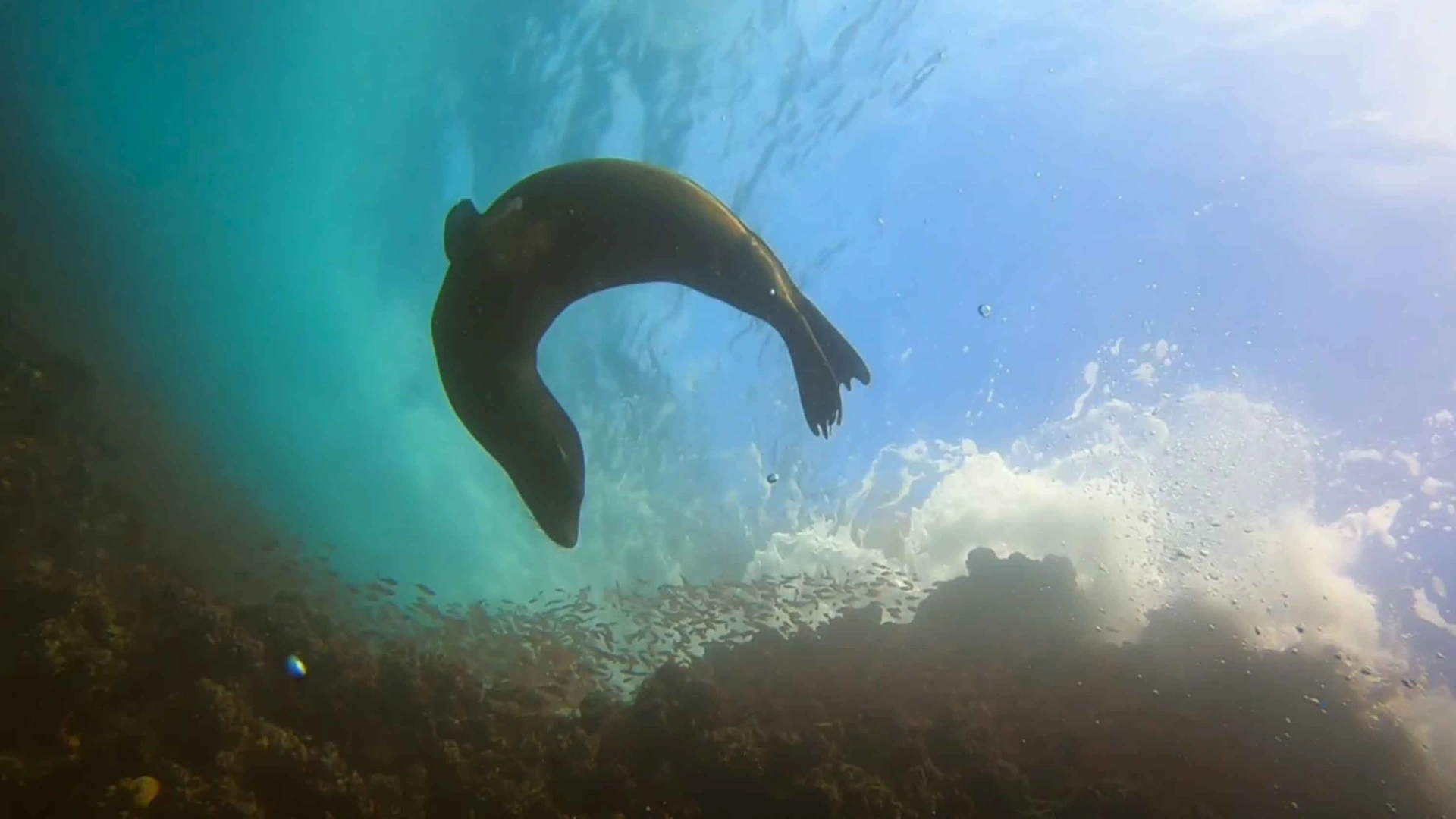
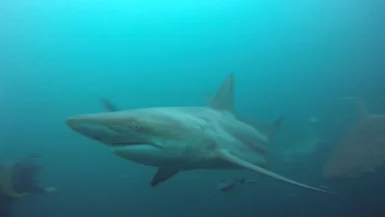
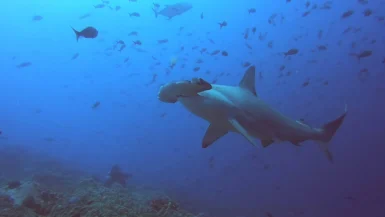
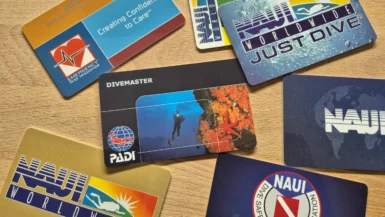
Leave a reply